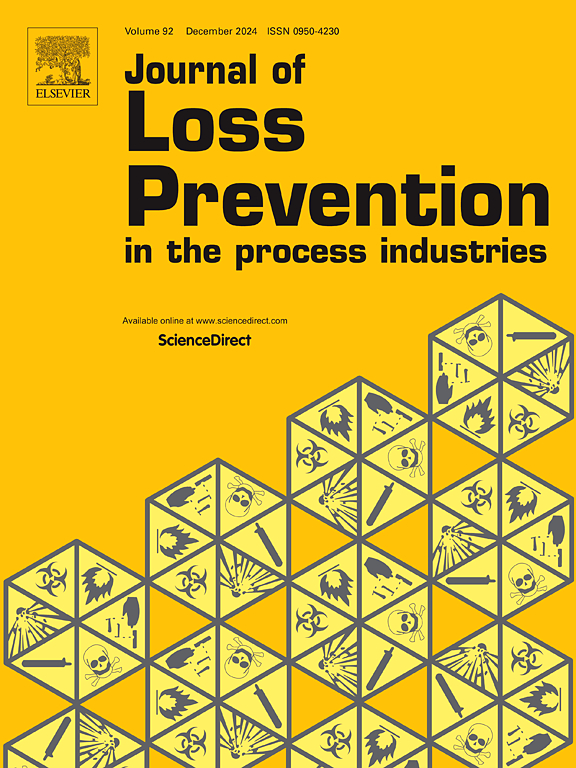Hydrogen safety for systems at ambient and cryogenic temperature: A comparative study of hazards and consequence modelling
IF 3.6
3区 工程技术
Q2 ENGINEERING, CHEMICAL
Journal of Loss Prevention in The Process Industries
Pub Date : 2025-02-22
DOI:10.1016/j.jlp.2025.105606
引用次数: 0
Abstract
Transport and storage of hydrogen as a liquid (LH2) is being widely investigated as a solution for scaling up the supply infrastructure and addressing the growth of hydrogen demand worldwide. While there is a relatively well-established knowledge and understanding of hazards and associated risks for gaseous hydrogen at ambient temperature, several knowledge gaps are yet open regarding the behaviour in incident scenarios of cryogenic hydrogen, including LH2. This paper aims at presenting the models and tools that can be used to close relevant knowledge gaps for hydrogen safety engineering of LH2 systems and infrastructure. Analytical studies and computational fluid dynamics (CFD) modelling are used complementarily to assess relevant incident scenarios and compare the consequences and hazard distances for hydrogen systems at ambient and cryogenic temperature. The research encompasses the main phenomena characterising an incident scenario: release and dispersion, ignition, and combustion. Experimental tests on cryogenic hydrogen systems are used for the validation of correlations and numerical models. It is observed that engineering tools originally developed for hydrogen at ambient temperature are yet applicable to the cryogenic temperature field. For a same storage pressure and nozzle diameter, the decrease of hydrogen temperature from ambient to cryogenic 80 K may lead to longer hazard distances associated to unignited and ignited hydrogen releases. The potential for ignition by spark discharge or spontaneous ignition mechanism is seen to decrease with the decrease of hydrogen temperature. CFD modelling is used to give insights into the pressure dynamics created by LH2 vessels rupture in a fire using experimental data from literature.
环境和低温下系统的氢安全:危害和后果建模的比较研究
作为扩大供应基础设施规模和应对全球氢需求增长的一种解决方案,液态氢的运输和储存(LH2)正受到广泛研究。虽然人们对环境温度下气态氢的危害和相关风险有了相对完善的认识和理解,但关于低温氢(包括LH2)在事故情况下的行为,仍存在一些知识空白。本文旨在介绍可用于缩小LH2系统和基础设施氢安全工程相关知识差距的模型和工具。分析研究和计算流体动力学(CFD)模型相辅相成,以评估相关事件情景,并比较环境和低温下氢气系统的后果和危险距离。该研究包括表征事件情景的主要现象:释放和扩散、点火和燃烧。对低温氢气系统进行了实验测试,验证了相关关系和数值模型。研究发现,原来针对常温氢气开发的工程工具也适用于低温场。对于相同的储存压力和喷嘴直径,氢气温度从环境温度降低到低温温度80 K,可能导致未点燃和点燃氢气释放相关的危险距离更长。随着氢气温度的降低,火花放电或自燃机制的点火电位降低。利用文献中的实验数据,CFD模型可以深入了解火灾中LH2容器破裂所产生的压力动态。
本文章由计算机程序翻译,如有差异,请以英文原文为准。
求助全文
约1分钟内获得全文
求助全文
来源期刊
CiteScore
7.20
自引率
14.30%
发文量
226
审稿时长
52 days
期刊介绍:
The broad scope of the journal is process safety. Process safety is defined as the prevention and mitigation of process-related injuries and damage arising from process incidents involving fire, explosion and toxic release. Such undesired events occur in the process industries during the use, storage, manufacture, handling, and transportation of highly hazardous chemicals.

 求助内容:
求助内容: 应助结果提醒方式:
应助结果提醒方式:


